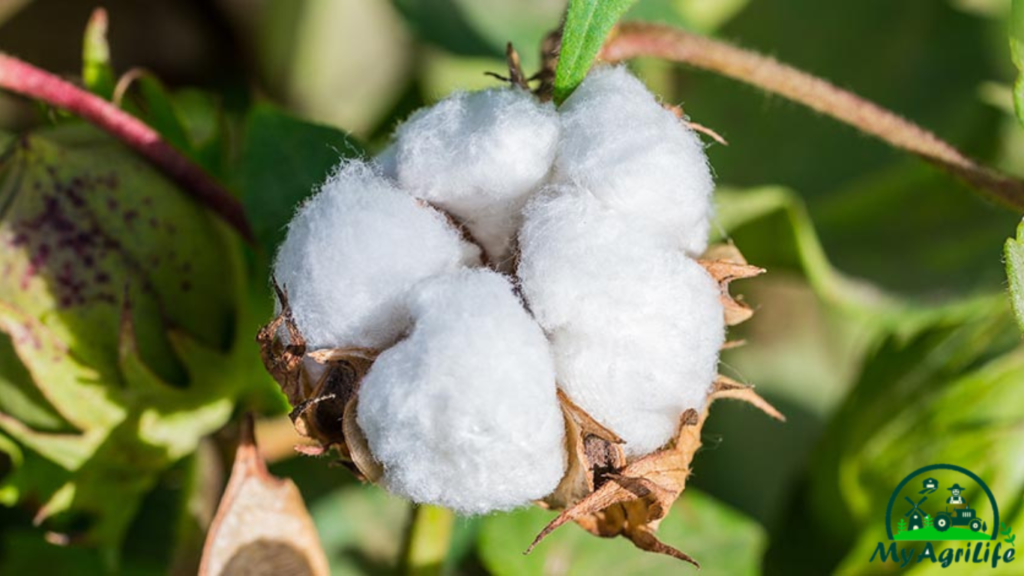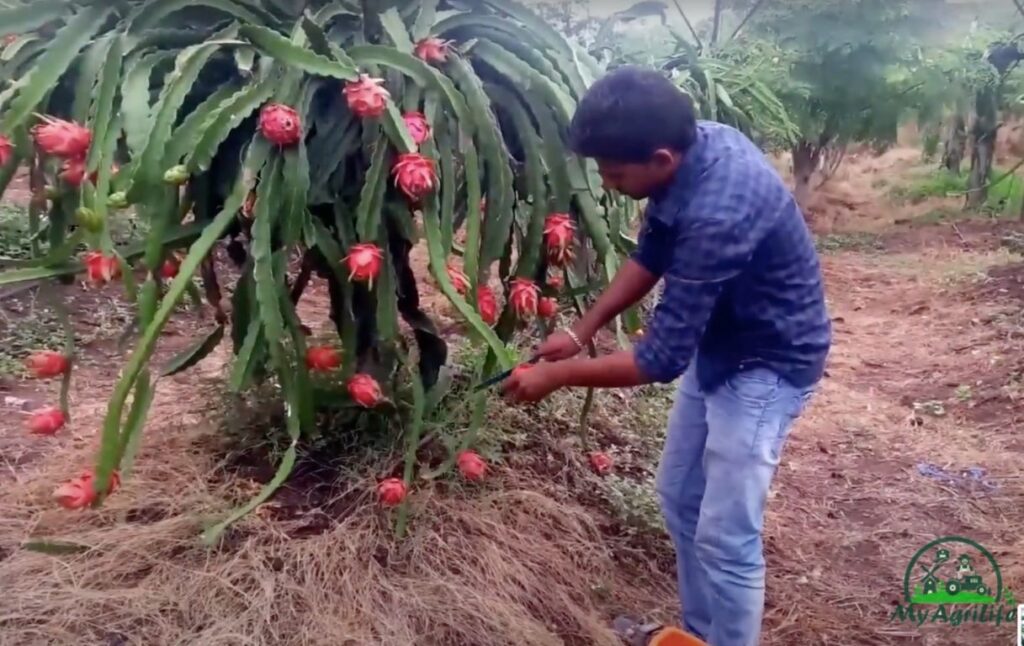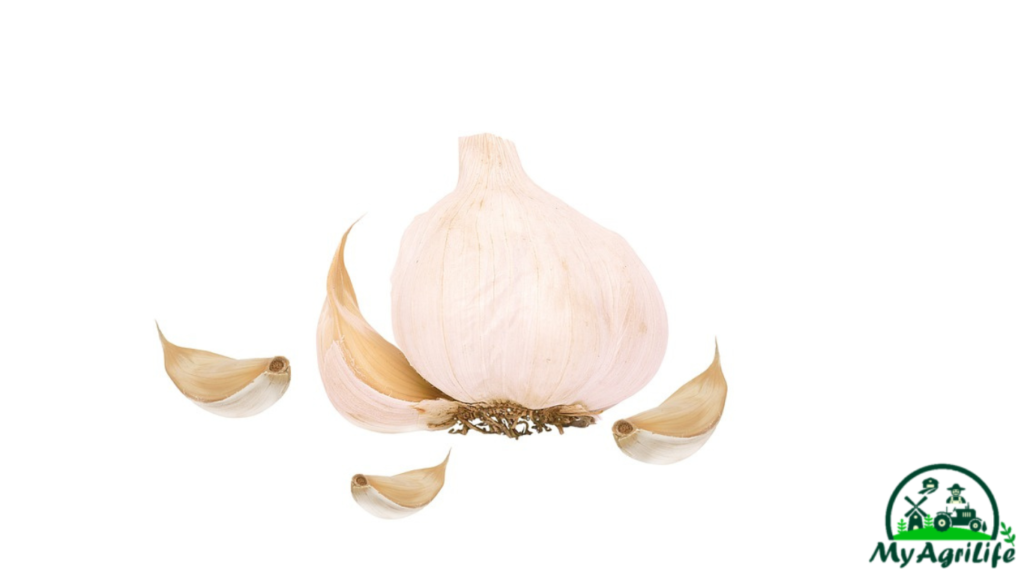
Garlic is a plant that belongs to the Allium family. It is widely used as a seasoning in cooking, as well as for its medicinal properties. Garlic is grown all over the world and is known for its pungent aroma and flavor.
Garlic is rich in vitamins and minerals, including vitamin C, vitamin B6, and manganese. It also contains sulfur compounds, such as allicin, which are responsible for its strong odor and many of its health benefits.
Garlic farming is the process of cultivating garlic for its bulbs, which are used as a culinary ingredient and for their potential health benefits. Garlic is a popular crop worldwide and is cultivated in many countries including China, India, and the United States.
The process of garlic farming includes land preparation, planting, crop management, harvesting, and storage. Proper land preparation and soil health are essential for the successful cultivation of garlic. The soil should be well-drained, fertile, and rich in organic matter.
Garlic is usually planted in the fall season, with the ideal time depending on the location and climate. The cloves are planted at a specific depth and spacing, and the crop is then irrigated and fertilized as needed. Weeding and pest management are also crucial for the health of the garlic crop.
Garlic bulbs are harvested when the leaves start to yellow and dry up. The bulbs are then cured for several weeks before being stored for long-term use. Garlic farming requires knowledge and skill, but can be a profitable and rewarding enterprise for farmers.
Some of the potential health benefits of garlic include:
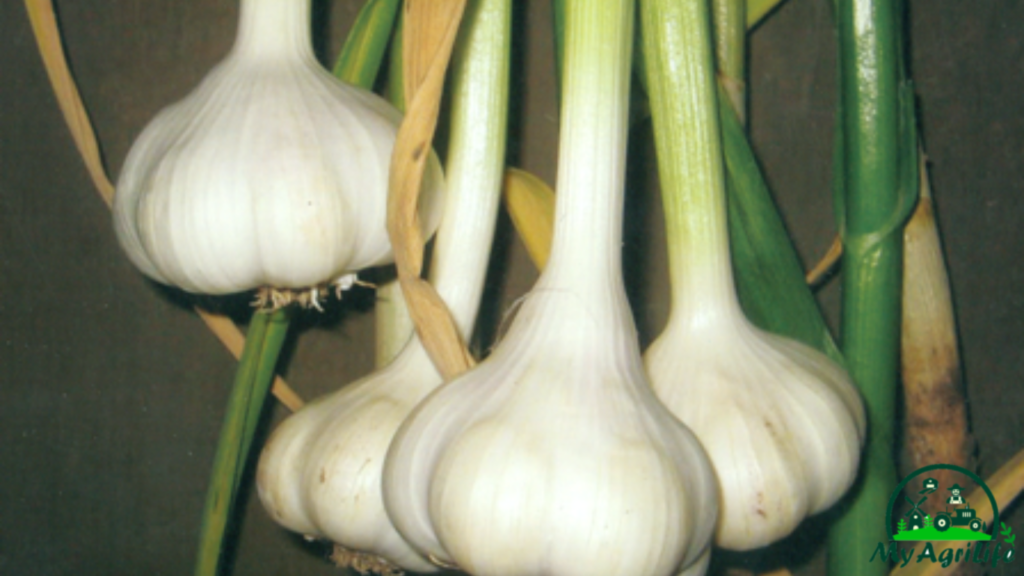
1.Lowering cholesterol levels
2.Reducing blood pressure
3.Boosting the immune system
4.Fighting infections and inflammation
5.Improving heart health
6.Acting as an antioxidant
Garlic can be consumed raw or cooked, and is often used to add flavor to dishes such as soups, stews, and stir-fries. It can also be taken in supplement form. However, excessive consumption of garlic can cause bad breath, body odor, and upset stomach, so it should be consumed in moderation.
Seed Specification Garlic
Garlic seeds, also known as garlic cloves or bulbs, are used to propagate garlic plants. The quality and characteristics of garlic seeds can have a significant impact on the resulting garlic crop. Here are some specifications for high-quality garlic seeds:
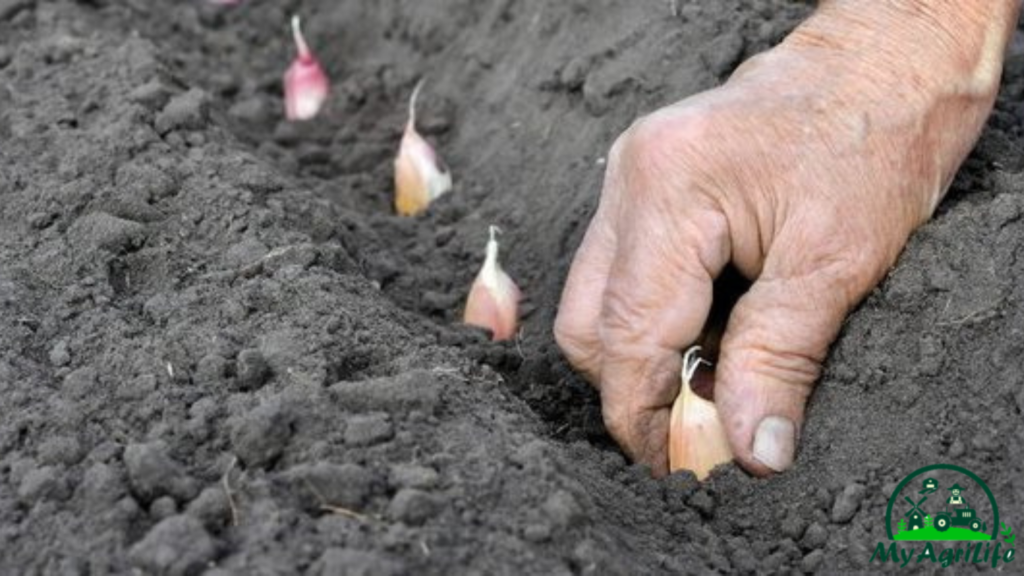
1.Size: Garlic seeds should be large, firm, and healthy-looking, with no visible damage or signs of disease. Larger garlic seeds tend to produce larger bulbs.
2.Color: Good quality garlic seeds should have a uniform color, with no discoloration or browning.
3.Weight: The weight of garlic seeds can also be an indicator of quality. Heavier garlic seeds are typically more mature and produce better quality bulbs.
4.Variety: There are many different varieties of garlic, each with its own unique flavor, size, and growth characteristics. Choose a variety of garlic that is well-suited to your growing conditions and intended use.
5.Origin: The origin of garlic seeds can also be important. Garlic seeds that have been grown locally are often better adapted to the local climate and soil conditions.
When selecting garlic seeds for planting, it is important to choose high-quality seeds from a reputable supplier. Proper planting techniques and growing conditions, such as well-draining soil, ample sunlight, and appropriate irrigation, can also help ensure a successful garlic crop.
Land Preparation & Soil Health Garlic
Land preparation and soil health are essential for a successful garlic crop. Here are some tips for preparing your land and ensuring healthy soil for growing garlic:
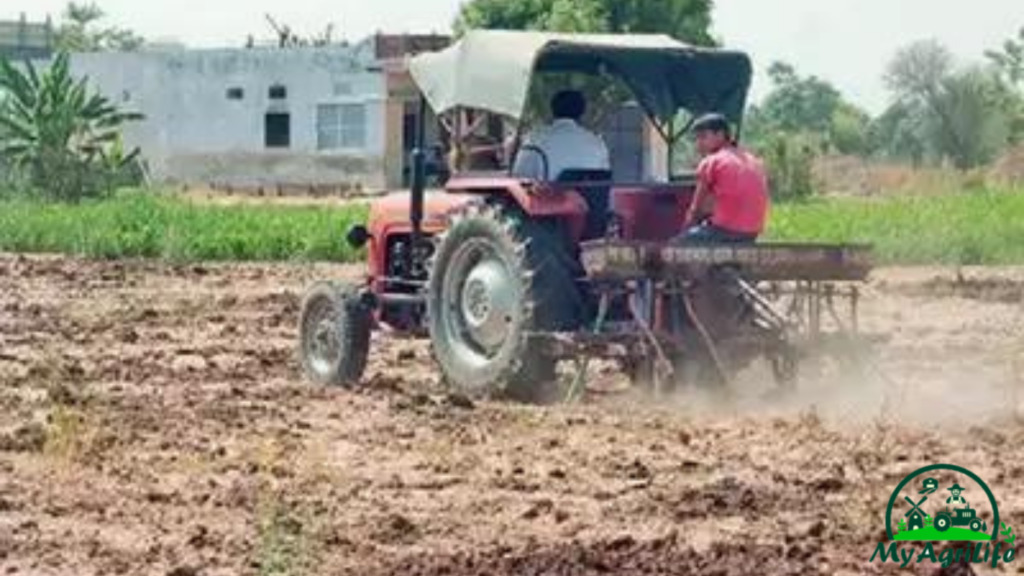
1.Choose the right location: Garlic requires well-drained soil that is rich in organic matter. Choose a location that receives full sun and has good drainage.
2.Test your soil: Test your soil to determine its pH level and nutrient content. Garlic prefers a slightly acidic soil with a pH between 6.0 and 7.0. If your soil is too acidic or alkaline, you may need to add lime or sulfur to adjust the pH.
3.Improve soil health: Incorporate organic matter into your soil, such as compost, manure, or cover crops. This can improve soil structure, water retention, and nutrient availability.
4.Till the soil: Till the soil to a depth of at least 8 inches to break up compacted soil and improve drainage. Avoid tilling when the soil is too wet, as this can damage soil structure.
5.Add fertilizer: Garlic requires nitrogen, phosphorus, and potassium for optimal growth. Add a balanced fertilizer before planting to provide these nutrients. Avoid using excessive amounts of nitrogen, as this can promote foliage growth at the expense of bulb development.
6.Mulch: Mulch can help suppress weeds, conserve moisture, and regulate soil temperature. Use a layer of organic mulch, such as straw or leaves, around the base of the garlic plants.
By following these tips for land preparation and soil health, you can create optimal growing conditions for your garlic crop and improve your chances of a successful harvest.
Crop Spray & Fertilizer Specification Garlic
Crop sprays and fertilizers can be used to improve the growth and health of garlic plants. Here are some specifications for crop sprays and fertilizers that are commonly used for garlic:
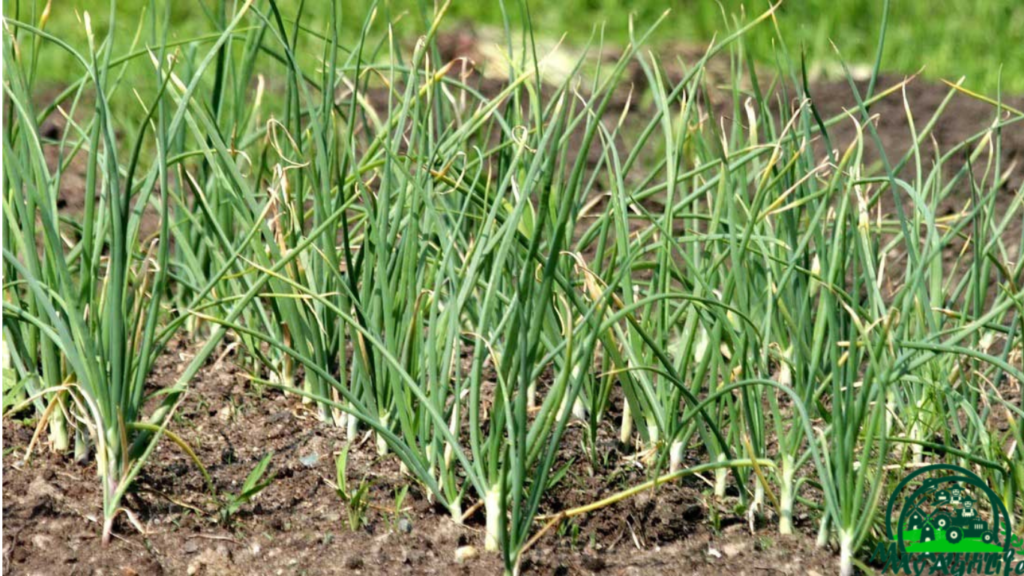
1.Crop spray: A crop spray is a solution that is sprayed onto the leaves of plants to provide nutrients or control pests and diseases. For garlic, a crop spray containing sulfur can help prevent fungal diseases such as white rot. Neem oil or garlic oil can also be used as natural pest control methods to control insects and pests.
2.Fertilizer: A balanced fertilizer containing nitrogen, phosphorus, and potassium can be applied to the soil before planting and throughout the growing season to provide essential nutrients for garlic plants. The amount of fertilizer needed will depend on the nutrient content of the soil and the growth stage of the plants. Avoid over-fertilizing, as this can cause excessive foliage growth at the expense of bulb development.
3.Organic fertilizers: Organic fertilizers, such as compost or manure, can also be used to provide nutrients to garlic plants. These fertilizers improve soil health, help retain moisture, and increase the population of beneficial microorganisms in the soil.
When applying crop sprays and fertilizers, be sure to follow the manufacturer’s instructions and apply at the appropriate times to avoid damaging the plants. Regularly monitoring the plants for pests and diseases, and taking appropriate measures to control them, can help ensure a healthy garlic crop.
Weeding & Irrigation Garlic
Weeding and irrigation are important aspects of garlic cultivation. Here are some tips for weeding and irrigating garlic:

1.Weeding: Garlic plants require space and nutrients to grow properly, so it’s important to keep the area around them free from weeds. Regular weeding with a hoe or by hand can help prevent weeds from competing with garlic plants for nutrients and water. Mulching around the plants can also help suppress weed growth.
2.Irrigation: Garlic plants require consistent moisture to grow properly, but overwatering can lead to disease and rot. Water the plants deeply once or twice a week, depending on the weather and soil conditions. Avoid watering the plants from overhead, as this can cause water to pool around the leaves and promote disease. Instead, use drip irrigation or water at the base of the plants.
3.Timing: It’s important to time watering and weeding correctly to prevent damaging the garlic plants. Weeding should be done when the soil is dry to prevent soil compaction, while watering should be done when the soil is slightly moist to prevent overwatering and root rot.
4.Harvest time: It’s important to reduce watering in the weeks leading up to harvest time to allow the garlic bulbs to dry out and cure properly. This can help prevent mold and rot during storage.
By following these tips for weeding and irrigation, you can help ensure a healthy garlic crop with maximum yield and quality.
Harvesting & Storage Garlic
Harvesting and storage are important steps to ensure a successful garlic crop. Here are some tips for harvesting and storing garlic:
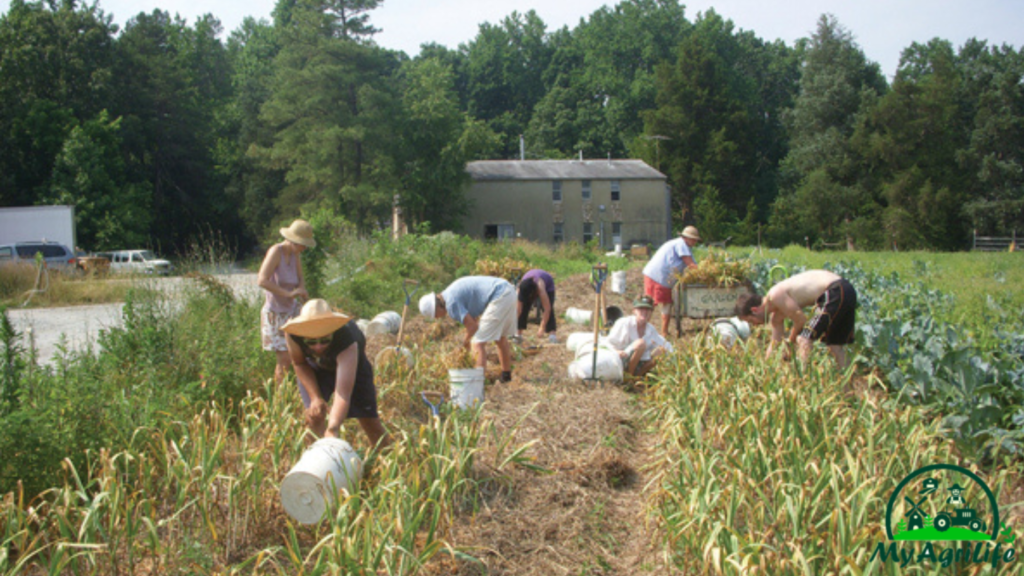
1.Harvesting: Garlic is ready to harvest when the lower leaves turn yellow and begin to dry out. Dig up the bulbs carefully using a garden fork or spade, being careful not to damage the bulbs. Shake off the soil and trim the roots and leaves, leaving about an inch of stem attached to the bulb.
2.Curing: After harvesting, garlic bulbs should be cured in a dry, well-ventilated area for 2-3 weeks. Spread the bulbs out on a wire rack or in a well-ventilated container and keep them out of direct sunlight. Curing helps to dry the bulbs and improve their flavor and storage life.
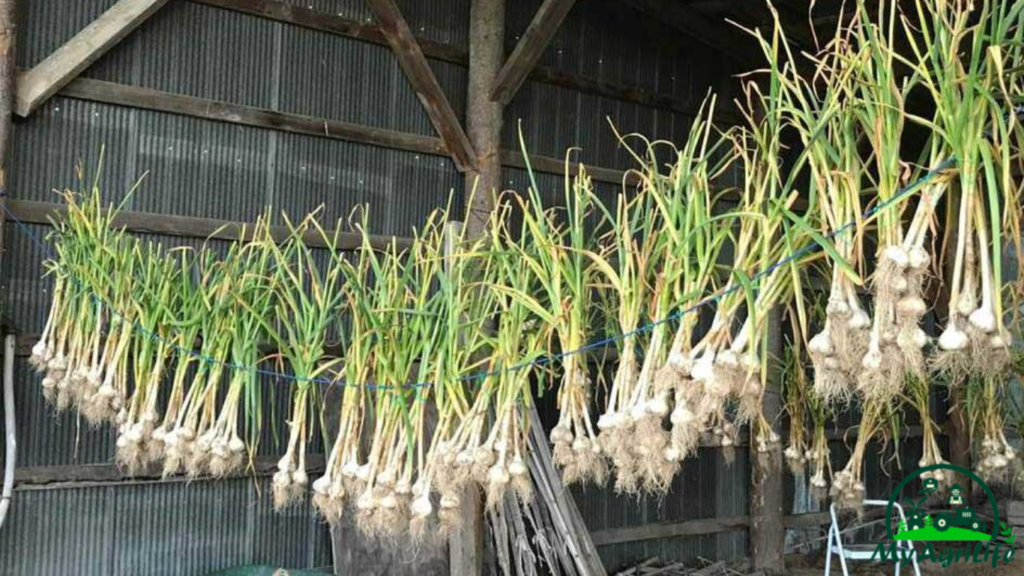
3.Storage: Once the garlic bulbs are cured, they can be stored in a cool, dry, and well-ventilated area. Braiding the garlic bulbs together can be a useful way to store them and can also make for a decorative kitchen display. Avoid storing garlic in the refrigerator, as this can cause the bulbs to sprout prematurely.
4.Checking for quality: Check the garlic bulbs periodically for any signs of mold or soft spots. Discard any bulbs that show signs of damage or deterioration.
By following these tips for harvesting and storage, you can enjoy your garlic crop for many months to come.
Conclusion
In conclusion, garlic farming can be a lucrative and rewarding business for farmers who have the proper knowledge, skills, and resources. Successful garlic farming requires proper land preparation, soil health, irrigation, fertilization, weed and pest management, and harvesting and storage techniques. Garlic has a high demand in the culinary and medicinal industries and can provide farmers with a reliable source of income. However, garlic farming can also be challenging and requires a significant amount of labor and attention to detail. Overall, garlic farming can be a profitable venture for farmers who are willing to invest their time, effort, and resources into this unique and valuable crop.








